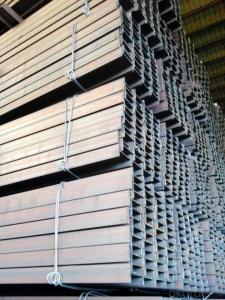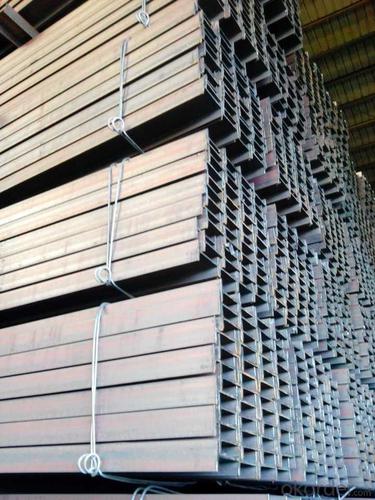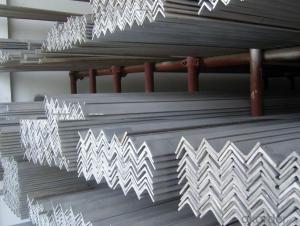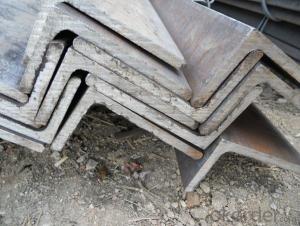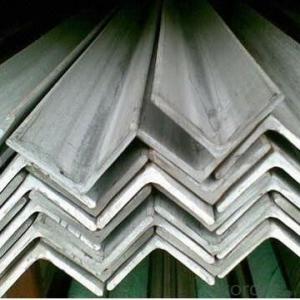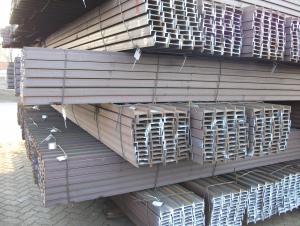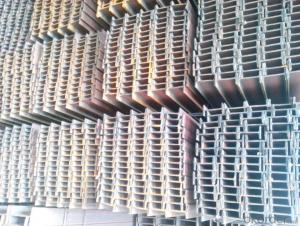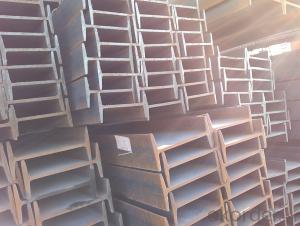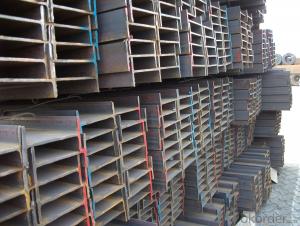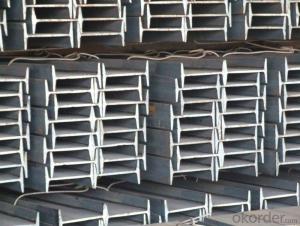Hot Rolled Steel IPEAA Beam EN Standard
- Loading Port:
- China Main Port
- Payment Terms:
- TT or LC
- Min Order Qty:
- -
- Supply Capability:
- -
OKorder Service Pledge
OKorder Financial Service
You Might Also Like
Product Description:
OKorder is offering IPEAA Beam at great prices with worldwide shipping. Our supplier is a world-class manufacturer of steel, with our products utilized the world over. OKorder annually supplies products to European, North American and Asian markets. We provide quotations within 24 hours of receiving an inquiry and guarantee competitive prices.
Product Applications:
1. structure construction and electronic tower building construction
2. bridge, trestle, autos, brackets, machinery
3.It is widely used in various building structures and engineering structures such as roof beams, bridges, transmission towers, hoisting machinery and transport machinery, ships, industrial furnaces, reaction tower, container frame and warehouse etc.
.
Product Advantages:
OKorder's IPEAA Beam are durable, strong, and resist corrosion.
Main Product Features:
· Premium quality
· Prompt delivery & seaworthy packing (30 days after receiving deposit)
· Corrosion resistance
· Can be recycled and reused
· Mill test certification
· Professional Service
· Competitive pricing
Product Specifications:
1.Standard: EN10025, GB Standard, ASTM
2.Grade: Q235B, Q345B, SS400, ASTM A36, S235JR, S275JR
Alloy No. | Grade | C | Mn | S | P | Si |
Q235 | B | 0.12%-0.20% | 0.3%-0.7% | <=0.045% | <=0.045% | <=0.3% |
3.Length: 5.8M, 6M, 9M, 12M or as the requriements of the customers
4.Sizes: 80mm-200mm
Dimensions | |||||
h | b | s | t | Mass Kg/m | |
IPEAA80 | 80 | 46 | 3.20 | 4.20 | 4.95 |
IPEAA100 | 100 | 55 | 3.60 | 4.50 | 6.72 |
IPEAA120 | 120 | 64 | 3.80 | 4.80 | 8.36 |
IPEAA140 | 140 | 73 | 3.80 | 5.20 | 10.05 |
IPEAA160 | 160 | 82 | 4.00 | 5.60 | 12.31 |
IPEAA180 | 180 | 91 | 4.30 | 6.50 | 15.40 |
IPEAA200 | 200 | 100 | 4.50 | 6.70 | 17.95 |
FAQ:
Q1: Why buy Materials & Equipment from OKorder.com?
A1: All products offered byOKorder.com are carefully selected from China's most reliable manufacturing enterprises. Through its ISO certifications, OKorder.com adheres to the highest standards and a commitment to supply chain safety and customer satisfaction.
Q2: How do we guarantee the quality of our products?
A2: We have established an advanced quality management system which conducts strict quality tests at every step, from raw materials to the final product. At the same time, we provide extensive follow-up service assurances as required.
Q3: How soon can we receive the product after purchase?
A3: Within three days of placing an order, we will begin production. The specific shipping date is dependent upon international and government factors, but is typically 7 to 10 workdays.
Images:
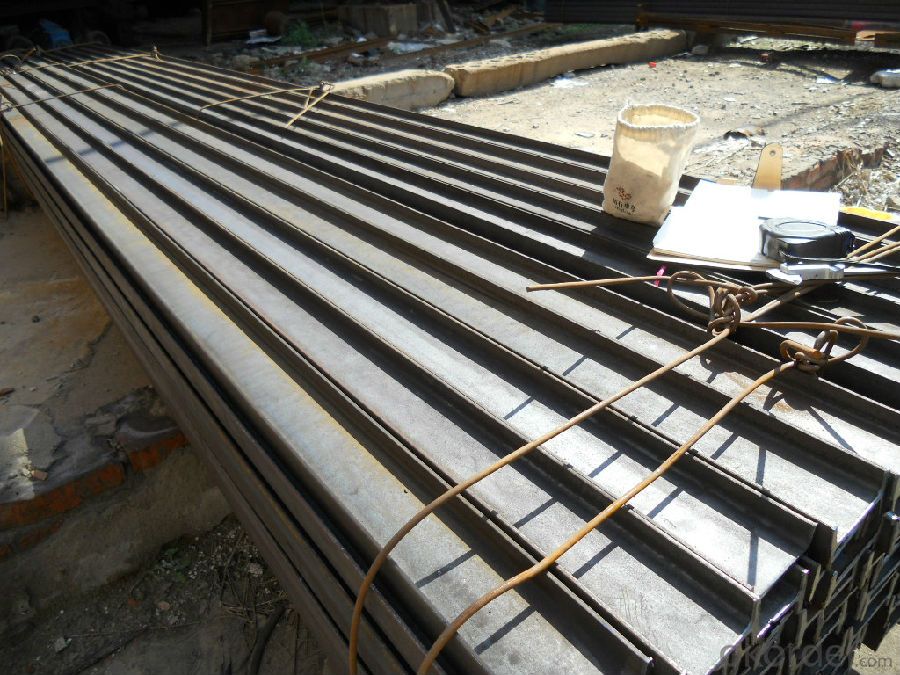
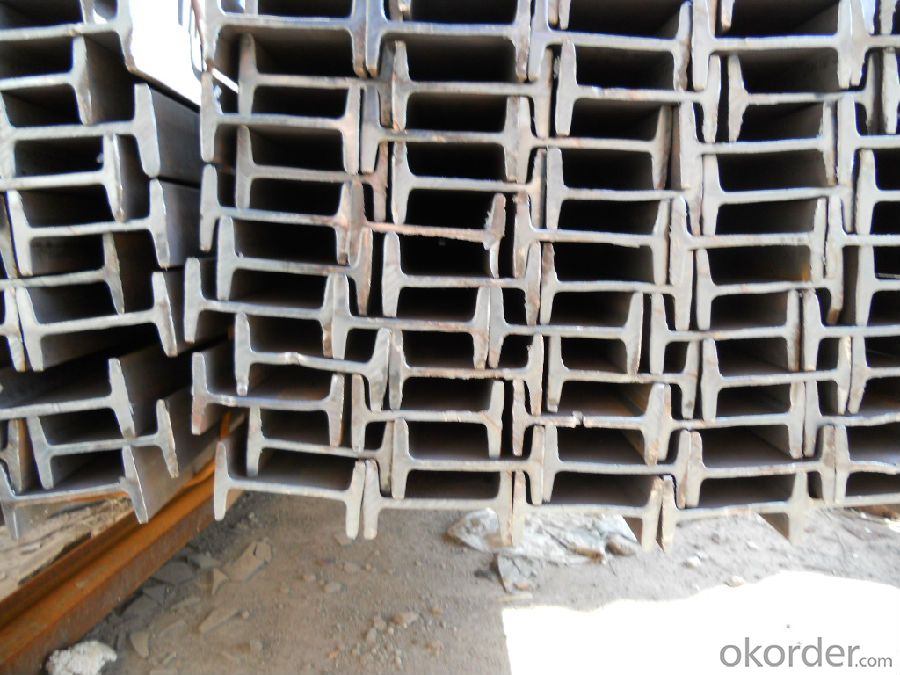
- Q: Can steel angles be used for modular construction?
- Yes, steel angles can be used for modular construction. Steel angles are commonly used in construction for their strength, versatility, and cost-effectiveness. In modular construction, steel angles can be used to create frames, support structures, and connections between modules. They provide stability and structural integrity to the modular units, ensuring durability and safety. Additionally, steel angles can be easily fabricated and customized to suit the specific design requirements of modular construction projects. Overall, steel angles are a viable and commonly used material in modular construction due to their numerous benefits and suitability for the construction process.
- Q: Are steel angles suitable for conveyor systems?
- Yes, steel angles are suitable for conveyor systems. Steel angles are often used in conveyor systems due to their strength, durability, and versatility. They provide a rigid structure that can support heavy loads and withstand the continuous motion and vibrations of a conveyor system. Steel angles can be easily welded or bolted together to create the framework for the conveyor system, allowing for easy customization and modification. Additionally, steel angles are resistant to corrosion, making them suitable for various environments and applications.
- Q: Are steel angles resistant to corrosion?
- Yes, steel angles are resistant to corrosion due to the protective oxide layer that forms on their surface, which helps prevent rusting and deterioration over time.
- Q: Are steel angles suitable for architectural cladding?
- Architectural cladding can indeed utilize steel angles effectively. Due to their robustness, strength, and adaptability, steel angles find wide usage in architectural settings. They offer a sturdy framework capable of supporting a range of cladding materials, including metal panels, glass, and composites. Architects can customize steel angles to suit various sizes and shapes, enabling them to achieve desired aesthetics and design specifications. Moreover, steel angles allow for easy fabrication and installation, making them a cost-efficient option for architectural cladding. Nevertheless, when selecting steel angles for cladding applications, it is crucial to consider factors like corrosion resistance, weather resistance, and maintenance requirements.
- Q: Can steel angles be used for electrical conduits?
- Steel angles cannot serve as electrical conduits. Electrical conduits are commonly made from non-metallic materials like PVC or metal materials such as galvanized steel or aluminum. Steel angles, on the other hand, are utilized for structural support and reinforcement in construction endeavors, but they are not intended or appropriate for use as electrical conduits. Electrical conduits have specific insulation, protection, and grounding requirements that steel angles do not fulfill. To ensure the integrity and efficiency of electrical installations, it is crucial to employ appropriate electrical conduits that satisfy the necessary safety standards.
- Q: Can steel angles be used for shelving units?
- Absolutely! Shelving units can indeed utilize steel angles. These angles are widely employed in construction and industrial settings owing to their impressive robustness and endurance. They offer exceptional structural reinforcement and can effortlessly bear substantial loads, rendering them perfect for shelving units that necessitate the support of considerable weight. Moreover, steel angles are incredibly adaptable and can be effortlessly tailored to suit diverse shelving designs and setups. Whether it be for domestic, corporate, or commercial purposes, steel angles are a dependable option for crafting resilient and enduring shelving units.
- Q: How do you clean and maintain steel angles?
- To clean and maintain steel angles, you will need a few basic materials and follow some simple steps. Here is a guide to help you with the process: 1. Gather the necessary materials: You will need a soft cloth or sponge, mild detergent or soap, warm water, a bucket, and a microfiber cloth or towel for drying. 2. Start by preparing a cleaning solution: Mix a small amount of mild detergent or soap with warm water in a bucket. Avoid using harsh chemicals or abrasive cleaners as they can damage the steel surface. 3. Dip the soft cloth or sponge into the cleaning solution and wring out any excess liquid. You want the cloth to be damp, not soaked. 4. Gently wipe the steel angles with the damp cloth or sponge. Ensure you cover the entire surface, including the crevices and corners. For stubborn stains or dirt, apply a bit more pressure but avoid scrubbing too vigorously to prevent scratching. 5. Rinse the cloth or sponge with clean water and wipe away any soap residue from the steel angles. 6. Once the cleaning process is complete, use a microfiber cloth or towel to dry the steel angles thoroughly. This step is essential to prevent water spots or rust formation. 7. For regular maintenance, you can use a stainless steel cleaner or polish. Apply a small amount of the cleaner onto a clean cloth and gently rub it onto the steel angles, following the manufacturer's instructions. This will help restore shine and protect the steel surface. 8. Avoid using abrasive materials such as steel wool or scouring pads, as they can scratch the steel angles. Additionally, keep acidic substances or chemicals away from the steel as they can cause corrosion. 9. It is also recommended to periodically inspect the steel angles for any signs of rust or damage. If you notice any rust spots, you can use a rust remover or stainless steel cleaner specifically designed for removing rust. Follow the product instructions carefully and ensure you thoroughly dry the angles afterward. By following these steps, you can effectively clean and maintain steel angles, keeping them in excellent condition for years to come.
- Q: How do steel angles perform in terms of sound insulation?
- Steel angles are not typically recognized for their ability to provide sound insulation. This is due to their inflexible and compact composition, which limits their capacity to absorb or diminish sound waves. Consequently, they do not offer significant sound insulation on their own. Nevertheless, when utilized alongside materials like acoustic insulation, steel angles can contribute to the overall sound insulation of a structure. Moreover, the thickness and design of the steel angles can also influence their sound insulation performance. In general, while steel angles may not possess exceptional sound insulation properties, they can still play a role in enhancing the overall soundproofing of a building when employed in conjunction with other soundproofing materials.
- Q: Can steel angles be used for manufacturing door frames?
- Indeed, door frames can be manufactured using steel angles. In construction, steel angles are frequently employed owing to their robustness and endurance. They offer structural reinforcement and can be effortlessly joined via welding or bolting to create a solid frame. Moreover, steel angles possess the added benefit of being resistant to corrosion, a crucial feature for door frames that are exposed to the elements. Furthermore, steel angles can be tailored to precise measurements and shapes in order to suit the desired design and dimensions of the door frame. All in all, steel angles are a trustworthy and widely favored option for door frame fabrication.
- Q: What are the different types of steel angles connections for columns?
- There are several different types of steel angle connections for columns, including the bolted shear plate connection, welded connection, and clip angle connection. Each type of connection has its own advantages and disadvantages, and the choice of connection depends on factors such as the load requirements, design preferences, and ease of installation.
Send your message to us
Hot Rolled Steel IPEAA Beam EN Standard
- Loading Port:
- China Main Port
- Payment Terms:
- TT or LC
- Min Order Qty:
- -
- Supply Capability:
- -
OKorder Service Pledge
OKorder Financial Service
Similar products
Hot products
Hot Searches
Related keywords
